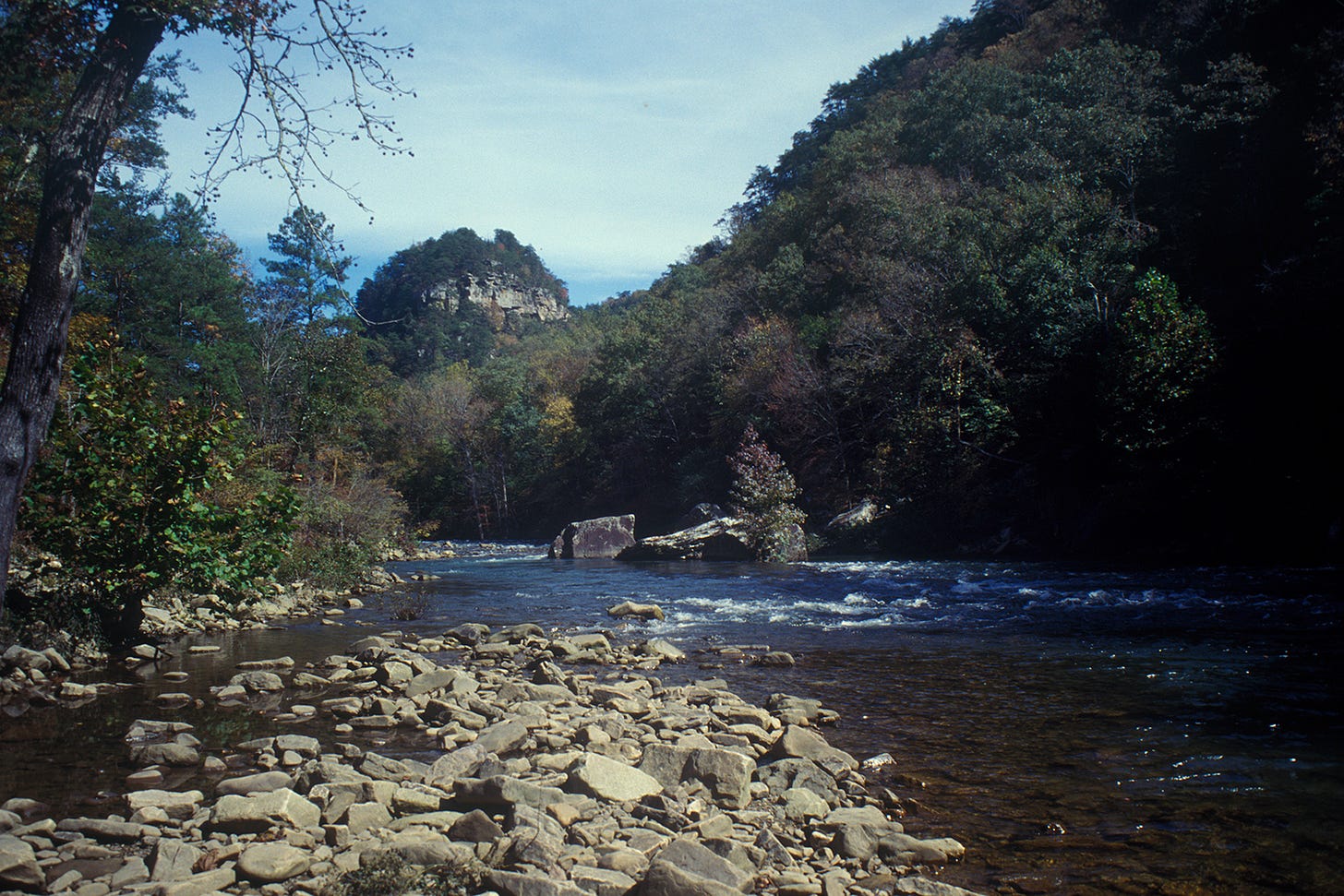A Visit to Little River Canyon:
The Care of rivers is not a question of rivers but of the human heart. – Shozo Tanaka
This is my story about the Little River in Northeast Alabama, which should not be confused with the Little River in East Tennessee.
The Canyon
The Little River rises from limestone through cracks and crevices near the Alabama/Georgia border. It winds through Lookout Mountain countryside to DeSoto Falls and Desoto State Park. After a few more miles, it descends again at the spectacular Little River Falls.
After the descent at Little River Falls, it enters the Little River Canyon and Weiss Lake. On the journey through the canyon, it passes spectacular bluffs that were once a battleground between conservation and development. An organization named Save Our Land promoted keeping the canyon in private hands, but the Friends of Little River pushed for inclusion in the National Park System.
The Little River Canyon National Preserve was established by public law 102-247 on October 21, 1992. The official story of that event appears on a National Park Service website.
Words of environmental destruction were everywhere, but when all seemed lost, I celebrated one small victory, one triumph of bravery, by ordinary citizens. One piece of the remaining wild American landscape was preserved. It is good to learn of their success.
In that preserved land, the waters pass limestone cliffs, caves with a history of early Native American habitation for thousands of years, and natural displays of flora and fauna. The waters are so clean that they barely register on many pollution tests.
In past years threats to the canyon and its beauty had arisen. One plan involved the construction of a power dam on the canyon's lower end. Meanwhile, people were building further and further south along the Lookout Mountain Parkway. Nevertheless, some threats to the Little River Canyon were stopped.
When the Little River Canyon National Preserve Office opened, there were two employees, a full-time park planner and a part-time park superintendent. The superintendent was also in charge of Russell Cave, a prehistoric site near Bridgeport, Alabama. Russell Cave is said to have the most complete archaeological record in the Southeastern United States.
Jacksonville State University of Jacksonville, Alabama, operates a field school with educational programs for school students and the public. Visit their website for full information.
When Congressman Tom Bevel introduced his bill to create the preserve, the reception was unenthusiastic, but the bill passed.
This article was substantially revised from the previous one in The Art of Living, Chattanooga, Tennessee, published by Finn Bille, editor, in the early 1990s. A previously unpublished piece follows.
Between Two Waterfalls
Some rivers are a wild ride of continuous rapids and waterfalls, standing waves, and drops over sudden ledges that make helmets mandatory and may overturn rafts full of adventurers in a heartbeat. The Little River, at least that portion above the Little River Falls, is no such river.
One day I floated with the current and paddled only enough to maintain headway between the banks overgrown with the white, red, pink, and purple flowering rhododendron and mountain laurel. My companions and I easily kept our inflatable raft afloat and upright on this gentle river. We crossed occasional rapids, but not even class I. The hard-core whitewater rafters and kayakers might wonder why we even bothered with this gentle stream.
Altogether, there were five of us, a young woman taking a day off from the brutal outdoor labor of landscaping, a middle-aged physician, a young married couple, and myself, a self-proclaimed naturalist and outdoor expert. We floated with the river, enjoying the colorful wash of flowering shrubs in bloom.
Occasionally we stopped to swim and dive from a large boulder overlooking a bottomless pool. Some previous sojourners on this river thoughtfully installed a metal ladder on the boulder.
As we floated down the river, the doctor photographed the rhododendron-lined banks, and we relaxed and enjoyed the day. For a lesson in relaxation, there is no equal to a gentle ride like this.
Now and then, a heron broke the stillness by taking flight and working its way downstream to resume a silent vigil. The bird stood over another serene stretch of water and perhaps caught a fish for dinner.
At one point, we heard a rush of water ahead. We panicked, remembering the outfitter's warning not to go over the Little River Falls. A brief stretch of rapids generated the sound, and we resumed our placid journey after one or two minutes of paddling to keep our course. Then we arrived safely at the takeout point.
The mountain and the river revealed themselves as a place of exquisite beauty and recreational renewal. Together we journeyed homeward. Remembering the tranquil beauty of the river fills me with peace.






